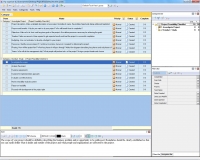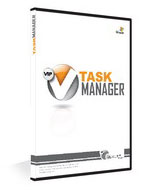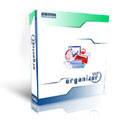|
Task Management Software |
 |
|
|
|
|
| |
|
 TESTIMONIALS TESTIMONIALS
|
|
"...This is an excellent program. I'm so glad that I stumbled on to this when researching for task management programs. Very low learning curv, quite flexible, and the price is right. Tried at least 20 other programs, either too complicated, too expensive, or poor documentation..."
Chad Lindsey -
Honolulu, HI
|
|
|
|
|
|
|
|
Project Feasibility Checklist |
|
|
|
|
|
|

 |
Before any project can be launched there is a strong need to assess its feasibility and make sure it is practically executable, cost-effective and profitable. In this Project Feasibility Checklist you can read on how to investigate your project and conduct a study.
|
| Order 750 checklists in MS Word and PDF printable format at $49.99 USD only. |
BUY NOW!  |
1. Investigate Project.
- Project description. Make a detailed description of your project including its name, the problem/opportunity being addressed/exploited, stakeholders, inputs, expected results (outputs).
- Purpose and benefits. Why do you want to do your project? Who will benefit from its completion?
- Objectives. Make a list of short- and long-term goals of the project. Also define processes necessary for achieving the goals.
- Timeline. Define an amount of time required to get expected results and lead the project to successful completion.
- Budgeting. Use cost estimates to develop a budget for your project.
- Resources. Identify resource types (IT, technical, inventory, human etc.) required for delivering the project.
- Phasing. How will the project flow? What key phases it will pass through? Make flow diagrams describing key phases and sub-phases of the project.
- Teams. Who will do the management duty? What people will perform tasks of the project? Assign a project leader and choose candidates to your team.
2. Conduct Study.
- Investigate the scope. The scope of your project should be definitive describing the business problem and/or opportunity to be addressed. Boundaries should be clearly established so that you can easily define what is inside and outside of the project and what people and organizations are affected by the project.
- Analyze the project. You are going to initiate a project to produce some product or/and address a problem. In order to make sure the project is effective you need to analyze it and discover its strengths and weaknesses. The SWOT analysis will show you whether you need to modify content of your project.
- Examine requirements. You need to make sure requirements to your project are defined according to project goals. It means that those requirements should correlate with requirements of the project product and be approved by the project customer.
- Examine the implementation approach. There should be some approach representing a course of action to meet the requirements and implement the project. You need to make certain that such an approach is viable so it delivers some practical solution that satisfies your requirements.
- Evaluate cost-effectiveness. Now you need to examine cost-effectiveness of the approach. First of all you can begin with an analysis of the estimated total cost of your project. In addition, you can estimate an amount of time required for the project. Then you need to prepare a cost and evaluation summary showing such things as cost-benefit analysis and ROI (Return on Investments).
- Make a feasibility study document. This step is to assemble all the previous elements into the study which is a formal document that proves your project is feasible and requires practical implementation. This document should be reviewed with all parties involved (sponsor, project manager, technical specialists) to ensure its thoroughness and accuracy. If everything is ok the study is agreed and signed. In case it is rejected reasons for the rejection should be explained and enclosed to the document.
- Report on feasibility. The final step is to write a study report which is a documented output of the study to summarize results of evaluations and analysis made to review your project and examine alternatives. Such a report is usually written by a project manager. You ...
| Order 750 checklists in MS Word and PDF printable format at $49.99 USD only. |
BUY NOW!  |
|





 |
CentriQS Tasks Management Solution 
Looking for multi-user task management software? Try CentriQS complete task management solution for planning, tracking and reporting tasks, projects, and schedules. Increase productivity of your small business or office by better organizing your employees' tasks and time.
 FREE Download CentriQS FREE Download CentriQS
|
|
|
|
|
|
|
|
|
|
CentriQS  -15% OFF -15% OFF |
All-in-one business management software
for small and midsize enterprises |
 |
|
|
| VIP Task Manager |
Multi-user project management software
to plan, schedule and track project tasks. |
 |
|
|
| VIP Checklists
|
More than 750 ready-to-use to-do lists
to plan your personal and business life |
 |
|
|
| VIP Team To Do List |
Professional task management software
to make and send team todo lists by email |
 |
|
|
| VIP Organizer |
Personal time management software
to organize time at home and at work |
 |
|
|
| VIP Simple To Do List
|
Simple and effective to-do list software
to plan daily chores, trips, wedding, etc. |
 |
|
|
|
|
|
|
|